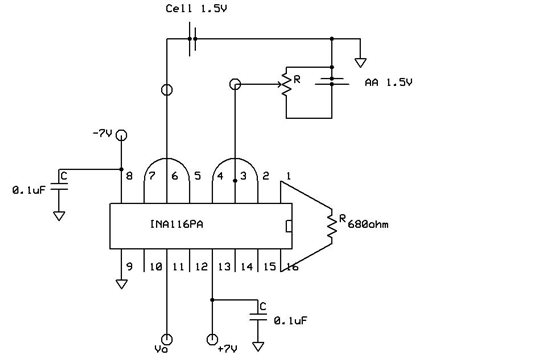Hi all,
I recently purchased a few INA116PA instrumentation amplifiers to amplify a slowly oscillating (period = 140s, amplitude = 60mV) signal taken from a chemical cell for a chemistry experiment. Right now I'm trying to get started with the amplifier, just seeing if I can amplify a DC voltage from a variable voltage DC power supply. I've hooked everything up according to the datasheet but I don't get any amplification; the largest output I can get out of the amplifier is 3V, even though my power supply is +-16V. The output signal is also unstable, oscillating rapidly between 0 and 3V. Is there a correct procedure anyone can recommend for getting started with this amp? I can include a schematic of the circuit I'm using if that's helpful.
Thanks,
Sam Kenny
University of Minnesota




